#Ganga canal in Kashi
Explore tagged Tumblr posts
Text
Travel Unravel: World's Longest River Varanasi Antara Ganga Vilas Cruise
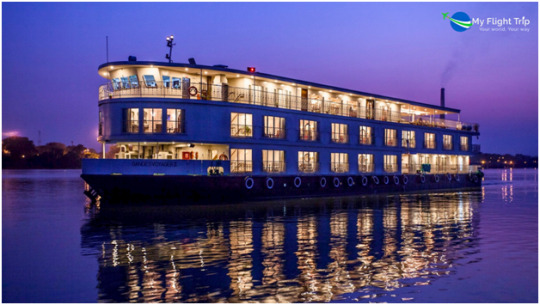
Varanasi, a city in northern India, holds a unique place in the hearts of travelers and spiritual seekers worldwide. Situated on the banks of the holy river Ganges, Varanasi is considered one of the oldest inhabited cities on Earth. Its rich cultural heritage, ancient temples, vibrant ghats, and spiritual aura make it a must-visit destination for anyone seeking an immersive experience in Indian culture and spirituality. In this blog, we will delve into the world of Varanasi and explore the mesmerizing Antara Ganga Vilas Cruise Ship, a remarkable way to explore the world's longest river and its historical treasures.
Overview: The Antara Ganga Vilas Cruise:
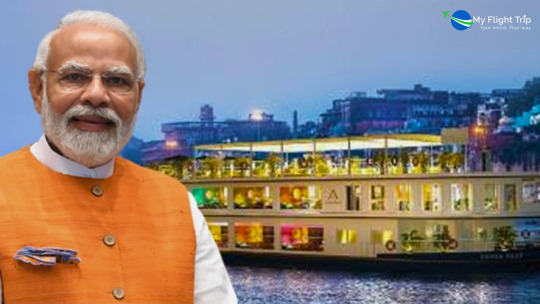
At Varanasi, the Prime Minister was scheduled to launch the Ganga Vilas Cruise Ship, organized by Antara Cruises, on January 13, 2023. It is a three-deck luxury cruise that embarks on a 51-day journey covering 3,200 km through five states of India and parts of Bangladesh. The cruise commences in Varanasi and traverses 27 river systems, including the Ganga-Bhagirathi-Hooghly, Brahmaputra, and West Coast Canal. It visits destinations such as Uttar Pradesh, Bihar, Jharkhand, West Bengal, Bangladesh, and Assam. The cruise offers an immersive and enchanting experience of exploring the diverse landscapes and cultural treasures along the Ganges River. The cruise is a floating palace, offering an unparalleled experience of comfort, luxury, and scenic beauty. It stretches approximately 380 kilometers, making it the most extended river cruise in the world.
Embarking On A Spiritual Adventure:

As you board the Antara Ganga Vilas Cruise, prepare for a spiritual adventure. The Ganga Vilas cruise takes you on a mesmerizing journey along the sacred Ganges River. Explore the iconic Vishwanath Mandir, witness the mystical Kashi Ganga Aarti, and experience the spiritual aura of Manikarnika Ghat. Discover the ancient site of Sarnath and immerse yourself in the divine atmosphere of numerous temples. This luxurious cruise ship offers a remarkable experience, combining cultural exploration with serene spirituality.
Witnessing The Magical Ghats Of Varanasi:
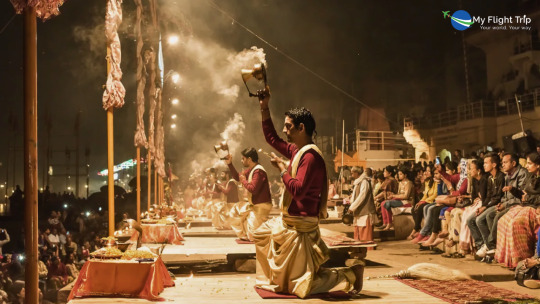
One of the highlights of the cruise is sailing past the iconic ghats of Varanasi. These ancient steps leading to the river are believed to be the gateway between the mortal and immortal realms. The mesmerizing sight of devotees offering prayers, performing rituals, and lighting oil lamps during the evening Banaras Ganga Aarti is a sight to behold.
Exploring Historical And Spiritual Sites:
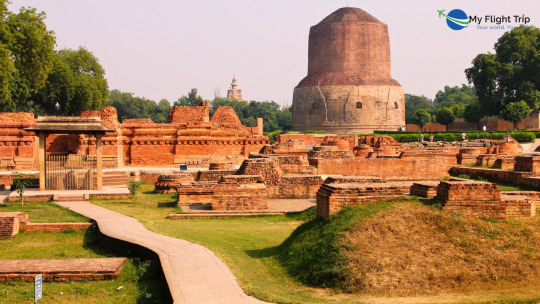
This Cruise offers stops at various historical and spiritual sites along the Ganges. Passengers can explore renowned places like Sarnath, where Lord Buddha gave his first sermon, and the Chunar Fort, a magnificent fortress with a rich historical legacy. These stops provide a deeper understanding of the cultural and religious heritage of the region.
Experiencing Cultural Extravaganza:
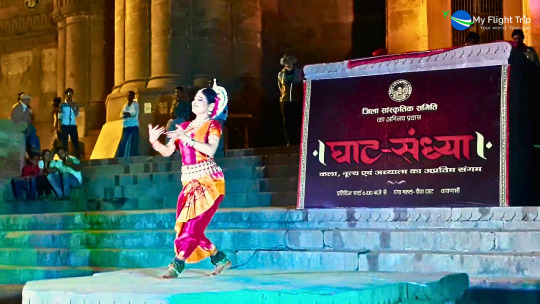
On board the cruise, passengers are treated to a wide array of cultural performances showcasing the rich traditions of Varanasi. From classical music and dance recitals to mesmerizing folk performances, every evening and morning celebrates the vibrant culture that thrives along the Ganges.
Luxurious Amenities And Comfortable Stay:
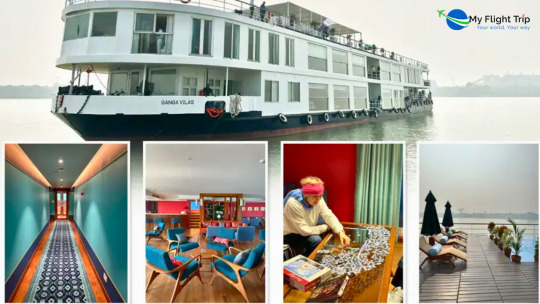
The Ganga Vilas Cruise offers luxurious amenities to ensure passengers' comfortable and opulent stay. From spacious and well-appointed cabins to world-class dining experiences featuring a delectable fusion of regional and international cuisine, every aspect of the cruise is designed to provide a memorable and indulgent stay.
Sunset And Sunrise On The Ganga:
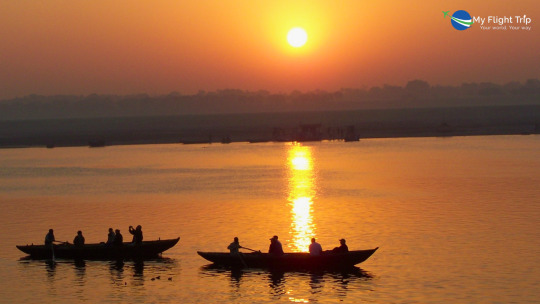
One of the most breathtaking experiences on the cruise is witnessing the captivating sunrise and sunset over the River Ganges with Varanasi tour packages. As the first rays of the sun paint the sky with a myriad of colors, or when the sun slowly descends, casting a golden glow on the river, the tranquil ambiance creates a sense of peace and serenity that is truly unmatched. Enhance your journey with a cruise aboard the luxurious Ganga Vilas cruise, offering a unique opportunity to enjoy the world's longest river cruise. Explore the enchanting city through Varanasi sightseeing packages and witness the famous Banaras Ganga Aarti.
The Antara Ganga Vilas Cruise on the world's longest river offers a truly unforgettable experience in Varanasi. Exploring the city's cultural heritage, witnessing the magical Varanasi ghats, and indulging in luxurious amenities onboard this cruise create memories that last a lifetime. Book your Varanasi tour packages to witness the mesmerizing Banaras Ganga Aarti, while cruising along the majestic River Ganges.
0 notes
Text
Travel India - Guide yourself to the budget destinations

India is a diverse country with a plethora of budget travel destinations for all tourists. From the majestic mountains to quaint offbeat retreats, there are many affordable places to visit in India that offer quality tourism experiences.Whether you're a student, planning a budget-friendly getaway, or exploring multiple destinations with limited funds, India has something for everyone. From serene hill stations and stunning beaches to lively cities and plains, there is a wide range of destinations to choose from. Indiator has compiled a list of incredible budget-friendly places to visit in India which are also the most preferred destinations among tourists. Browse through the options and start planning your next budget-friendly trip!
Here are the budget destinations that you can visit in India:
Alleppey:
Alleppey, known as the heart of Kerala's backwaters, boasts a vast network of waterways and over a thousand houseboats. These houseboats, which offer an uninterrupted view of life in the backwaters, have been revamped from the traditional Kettuvallams. Lined with coconut trees, the backwaters of Alappuzha provide a serene atmosphere to relax and unwind. A visit to this small yet bustling city center and bus-stand area, which is crisscrossed with canals, is a must. Discover the best tourist spots in Alleppey by booking Kerala tour packages online and immerse yourself in its lush greenery and laid-back vibe.
Varanasi:
Varanasi, also known as Banaras or Kashi, is theholiest city located on the banks of the sacred river Ganga. Considered the religious capital of India, it is a significant Hindu pilgrimage site, renowned for its ancient ghats, temples, narrow alleyways, and the famous Kashi Vishwanath temple. Varanasi is one such destination where you can enjoy quality time with your loved ones without breaking the bank. To plan an affordable holiday in Varanasi, you can check out Varanasi holiday packages on Indiator website and choose the one that best fits your needs.
Agra:
Agra, situated in the northern Indian state of Uttar Pradesh and nestled on the banks of the River Yamuna, is a globally recognized city. It boasts of one of the Seven Wonders of the World - the Taj Mahal, a mausoleum constructed for the beloved wife of the Mughal emperor, Shahjahan. The city is a paradise for history and architecture enthusiasts. Agra's Islamic culture also shines through its delectable cuisine. This place is the best option if you’re low on budget but also want to travel to a beautiful destination. Check out Agra One Day Tour Package on Indiator website and do your bookings right away!
Ramoji Film City – Hyderabad:
Ramoji Film City offers an exciting destination for anyone planning a budget trip, whether for a day tour or an extended stay. With a range of activities and amenities, it's perfect for families seeking a vacation or groups of friends looking for a fun getaway. From sports and entertainment to luxurious accommodations and rejuvenating treatments, it's an all-in-one tour that promises a memorable experience. Indiator is among the most reliable travel company providing Ramoji Film City tour packages that fit your budget and also makes everything enjoyable.
Elephanta Caves Tour:
The Elephanta Caves, located on Gharapuri Island, a one-hour ferry ride from Mumbai's Gateway of India, offer a glimpse into a fascinating world of rock-cut caves adorned with intricate carvings and numerous sculptures of Shaivite deities. Scholars have debated the exact age of the caves for many years, but it is widely believed that the sculptures and artwork are inspired by Hindu mythology, religious texts, and spiritual philosophy, providing a valuable commentary on Hindu society and culture. You can book the Mumbai Elephanta Cave tour package which is affordable and the most in demand.
These are some of the places that you can explore at affordable rates without worrying about anything further. Indiator provides budget holiday packages to all the major cities. From mountains to serene beaches, experience it all and witness the beauty of India!
0 notes
Text
काशी की गंगा नहर में पलट प्रवाह से बन रहा घातक भंवर, संकटमोचन महंत ने VIDEO शेयर कर बताया मौत का कुआं
काशी की गंगा नहर में पलट प्रवाह से बन रहा घातक भंवर, संकटमोचन महंत ने VIDEO शेयर कर बताया मौत का कुआं
वाराणसी में गंगा घाटों के समानांतर एक महीने पहले ही बनी नहर मौत का कुआं बनती जा रही है। गंगा के उल्टे प्रवाह के कारण यहां प्राण घातक भंवर साफ दिखाई दे रहे हैं। नदी विज्ञानी आईआईटी बीएचयू के प्रोफेसर… Source link

View On WordPress
#dangerous vortex in Ganga canal of Kashi#Ganga canal in Kashi#Ganga canal submerged in Kashi#hindi news#Hindustan#News in Hindi#well of death became#well of death in Ganga#well of death in Ganga canal#काशी की गंगा नहर डूबी#काशी की गंगा नहर में खतरनाक भंवर#काशी में गंगा नहर#गंगा नहर में मौत का कुआं#गंगा में मौत का कुआं#मौत का कुआं बना#हिन्दुस्तान
0 notes
Text
The great kings settled in Jodhpur and saved
Rajasthan History –
Rajasthan History provide printed Hindi E-books and articles on history and culture of Rajasthan and Indian History.
The great kings settled in Jodhpur and saved
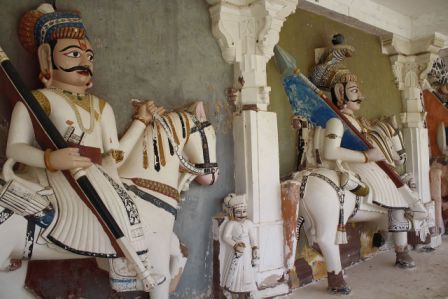
Rao Jodha, who settled Jodhpur, was a big warrior king. At the age of 12 he lived with his father in the battlefield and fought with the enemies. In 1438, when his father Razal was killed in Mewar, Jodha proceeded from Chittor to Jodhpur with his seven hundred Rathore warriors. Mewar's army followed Rathod, but Jodha succeeded in reaching Marwar with only eight Rathods, who courageously fought Mewar's army. Mewar's army took control over the Mandor. By continuing to fight for 15 years, Jodha not only took away Marwad, who had gone to the mouth of Maharana Kumbha, but also married the princess of Mewar. By establishing Jodhpur fort in AD 1445, Jodha made Marwar state safe forever. Until that time, cities like Jaipur, Bikaner and Udaipur were in the womb of future. Jodhha's descendants ruled Jodhpur for 490 years. His queen Jasamade Hadi made the Ranisar pond Jodha's son Satlal's queen Bhutani created the Phulhalava pond in AD1490. Jodhha's descendants, Ganga built a temple of Gangavla in Jodhpur, Baadhi of Ganga and a temple of Gangesamji. Padmavati of Ganga was the daughter of Maharana, who had built a Padamshar pond in Jodhpur. Maldeo, the son of Ganga, expanded the fort of Jodhpur and built a quote around the queen. He took the waterfalls of Chidiyannath into the fort and surrounded the coat and made a city sanctuary around Jodhpur. His queen Swarupdevi built a pond of Bahuji. The descendants of Jodha, Surasingh built the palaces of Foothills in Surasagar Talab, Rameshwar Mahadev Temple, Surajkund Bawdi and Jodhpur in the city outside Chandpol. His successor, Gaj Singh, built a new palace in the Jodhpur fort, Tomb of Tomb, next of the hall, Diwakhana, beach pole, Kothar, kitchen, Anandghanhi temple, several palaces in the palaces of the foothills, Kua, garden and palace in Sauragar. His son Jaswant Singh planted pomegranate garden in Jodhpur by procuring mud of clay and pomegranate seeds and plants in Jodhpur in Jodhpur. Jaswant Singh's Hadi was the daughter of Rani Bundi Naresh Shatrushal, who built a garden called Raika Bagh outside Jodhpur Nagar. This queen also built a pond called Kalyansagar which was later known as Ratana. Shekhawat of the Jaswant Singh Rani Khandela had made, Shekhawataji's pond in Jodhpur. Jaswant Singh's son Ajit Singh built a coat between Fatapol and Gopal Pol in Jodhpur fort. He built a temple of Ghanshyamji in Jodhpur fort and the temple of the original Nayakaji in Daulat Khan, Fatahmahal, Dusal, Khawwahah's palace, Rangasal and small Janana Mahal and Jodhpur city. His son Abhay Singh constructed the Abhayasagar Talab outside the Chandpole Gate and built a palace of Kukua, Flower Palace and Kachhwaji in Jodhpur fort. King Bakshasinh made the place of Kotwali between Jodhpur Nagar and Chowk for the sale of Nazis in Mandi. The town's hideout built in the time of Rao Maldev was now getting smaller, so Bakhatsinga expanded it again and made many improvements in the fort. During the time of Jaswant Singh, he built a square of the house of Dalanthana, crushing the warehouses near Lohapol, widening the road, and constructed a new pole of Janani Deodhi, new Surajpole and Anandghanhi in the fort. Vijaysinh son of Bakshasinh was one of the great kings of Jodhpur. He brought Gokulia Gusaiyan in Jodhpur and started spreading the culture of Braj in Jodhpur. He prohibited killing his organism in his state and got rid of his traditional work with the cashews and put them on other things. At that time, the temple of Gangesyamji in Jodhpur, temple of Balakrishnaji, Temple of Kunj Bihari, Gulab Sagar Talab, Giridichot, Maayal Bagh and his flute, Fateasagar and the temple of Murli Manoharji were built in the fort. Mansingh's grandson of Vijaysinh was a wonderful nagina of the epic of the great kings in the history of Jodhpur. He was a wise, virtuous and wise king. He established a library of several thousand books in Jodhpur under the name of book Prakash. He made his first translation of the first thirty-two chapters of the Tenth Wand of Shrimad Bhagavata, which was published in the name of Krishna Vilas. He made big pictures based on many religious texts, such as Ramayana, Durga Charitra, Shiva Purana, Shiva Mystery, Nath Charitra. Inside the fort in Jodhpur at Jodhpur, the wall opposite the Jaipol, Janani Dahdi, the tomb of Aes Devnath, the coat in front of Lohapol, the coat between the Jaipol and Dakhana pole, the road from Chakalaw to Rannis, the wall to protect it , Bhainu Poll, Chatrapeseva's Deodhi on Nathji Temple and Bhatiyani's Palace were built. It is said about Jodha, Vijay Singh and Mansingh - Jodh Beso Jodhpur Bridge Keele Brigpal Lucknow Kashi Delhi Man Kyo Nepal That is, Jodhpur settled in Jodhpur and Vijaysingh made it a Braj land by constructing the Vaishnava sect temple. Maharaja Mansingh called singers, wise men and yogis and made it Lucknow, Kashi, Delhi and Nepal. During the time of Maharaja Takhshingh, the walls of the Raniasar, Padamsar, Gulabsagar, Baiji ponds and fateasagar and their canals were expanded in Jodhpur. Baiji's pond pond was constructed. Rajmahal of Gulabsagar, the terrace of the Mandi valley, the shops on the east side of the temple of Gangesamji, the houses of the sari and the houses of Kotwali were made. Vidyasal outside Jodhpur town, palace of Balasamand, palace of palanquin, palace of kalana, Takhatsagar etc. were constructed. His Ranji Jadeji had built a palace and garden on the lake of Devraji near Balsamand. Magrajash, the greatness of Takhshing, was outside the Nagauri Gate and Lachhraj built bavalias in his name outside Jalori Darshan and Mata Chavadji of Takhtsingh built a temple of Fatebihari in front of the Tables. The Chamunda Mata Temple was rebuilt, which was blown up in the explosion of ammunition. At the time of Maharaja Jaswant Singh, Jodhpur was constructed as a new face. In his time, on July 3, 1876, opened a state school in Jodhpur for English language education. During his time Jodhpur was the first train to arrive. For the first time the post office opened. Arrangements have been made to bring drinking water in Jodhpur through the canals of Balasamand dam through the canals. The state printing press was established. Road to go from the Nagauri gates to the fort was made. Jaswant College was established for higher education. 15 Hospital open for medical treatment. Mailing and roads were arranged. Forest Department was established. Municipality opened Jaswant Sagar dam. From Maharaja Jaswant Singh to Maharaja Ummed Singh, Jodhpur received the services of Sir Pratap as Prime Minister. Modern Jodhpur's outline has been set for many. He was the younger brother of Maharaja Jaswant Singh. In the time of Maharaja Sardar Singh, the first Hindi hospital in Jodhpur was opened in the palaces of the foothills. In its time, to make the traffic smooth in the city, a new road was cut from the hill near Phulwala pond, and light was arranged on the streets of the city. Sardar Market and Ghatghar and Jaswant Thaar near the fort in the old Nazi Mandi named Giridi Coat. In his time Jodhpur Princely State started 1 Graduate College, 1 High School, 16 Vernacular Schools, 44 Anglo Vernacular Schools, 1 Rajput Nobel School, 1 Sanskrit School, 1 Normal School, 25 State Assisted Schools, 89 Post Offices and 23 Hospitals. Were. The length of the railway line was 525 miles and the work of Sardar Samand, Hemavas and Edward Samund started. Rajput High School was inaugurated at Chupassani during the time of Maharaja Sumer Singh, Sardar Museum was established in Jodhpur and Sumer Public Library was opened. Maharaja Ummed Singh can be called the creator of modern Jodhpur. During his time, Durbar became a new high school building and a new part of Jaswant College. The branch of Imperial Bank was opened in Jodhpur. The foundation of Umaid Palace was laid in the year 1929. Jodhpur became the largest hospital in the princely state, now called Mahatma Gandhi Hospital. - Dr. Mohanlal Gupta
For more information about Rajasthan History, visit our site - Click here
#indian history and culture#rajasthan history in hindi#ancient indian history#history of rajasthan#history of india#history of modern india
0 notes
Text
The city illumines truth and reveals reality. It does not bring new wonders into the scope of vision, but enables one to see what is already there. Where this eternal light intersects the earth, it is known as Kashi. ~Diana L. Eck
Hubris
When you date someone on and off for 10 years, then live with them for another year and a half, you feel as if you know them at a deep level, are connected by an intimacy reserved for lovers. You believe you are familiar enough with them that the unexpected is always expected and the possibility of surprise was replaced long ago by an endearing comfort.
This was how I felt about India…until visiting Varanasi (also known as Banares, Benares, Kashi) an ancient city founded by the Hindu God Shiva sometime around 800 BC. Artifacts found nearby in 2014 date back to 1800 BC supporting the view that Varanasi was inhabited at this time.
The city slapped us hard across the face awakening our minds to a whole new level of India’s chaotic insanity. I use slap not as an act to induce pain rather as a baby is slapped on the rump alerting it to a new reality. The insanity I use is the incomprehensibility to a mind deeply rooted in Western cultural norms. The ancient was a new Indian reality to me, to us, a reality we were unprepared for.
Varanasi/Benares
Benares is older than history, older than tradition, older than legend and looks twice as old as all of them put together! ~Mark Twain
Varanasi is India on steroids – roid rage. The traffic density allows for little breathing room between vehicles, put your arm out the window and it will be sheared off by vehicles moving in opposite directions frequently barely an inch separating a large bus from a small autorickshaw. The density of people because of numbers and narrow passageways means it is impossible to walk more than a few feet without becoming caught up in a school of fish pushing you upstream with directional change, other than that initiated by the mob, impossible. Was I short, I would have felt like a rat in an ever-shifting maze and finding the cheese was more accident than skill.
On morning two, we walked to the Ghats. They were not accessible by motorized vehicle so walking was our only option. “It’s just 5 minutes.” we were told, “Just follow that street.” We were still looking 30 minutes later. I used my Google Maps as an aid with marginal benefit. The streets are narrow, I can simultaneously touch buildings on both sides with my arms outstretched. The height of the buildings means only slashes of light renting the sky are visible and the street atmosphere feels like twilight.
The narrow canyons were filled with people, lots of people, cows, dogs, stores, bicycles, the occasional motorcycle, runoff from the houses, and dirt. It was impossible to walk directly east from our hotel to the Ghats. There are no straight streets. There are no right angles. There are no street signs. Everything twists and turns and confuses the neophyte traveler even confuses Google Maps. We asked directions many times using the name of the Ghat we were attempting to reach. Most responses were people pointing in a direction for us to walk. Each response came with great assurance but each directed us along a different path.
The air was stagnant. We had to watch the ground to avoid cow pies and dog droppings, look ahead to navigate the masses. We held hands to prevent separation from each other. Had we lost visual contact it would have been impossible to reconnect. Our journey took us through walls of smell. There were smells I recognized, others I didn’t. Still others I never want to cross the thresholds of my nostrils again. My wife walked with a scarf covering her mouth and nose. I had no option but to drink in the bouquet. I think this excursion was the tipping point when my wife decided it would be her last trip to India.
Walking required a half sideways crab motion, feet shuffling sideways while the eyes, pointed forward searched for gaps through which to plunge before the living crowd inhales closing the sliver of space. The half crab alignment narrows the body width just enough to allow squeezing through the swarm moving in the opposite direction. In any given moment, the body is bumping and grinding with several other human beings. The process has the violence of a multiperson quick fuck. Wham! Bam! Thank you, Ma’am! Sir! Ma’am! Cow! Sir! Sir! Ma’am! Gender indeterminate!
With a little luck, we emerged out of the streets onto the Ghat steps. By surprise, it was the Ghat we originally set out to locate.
Because we were so focused on escaping to the Ghat, I absentmindedly left my camera in my bag. These pictures are of other places we walked in Varanasi.
Traffic
Auto Rickshaw
A Steet of People and Stores
Look – a tourist!
Poverty
More Poverty
Still More Poverty
Sacred Cow
Sacred Cows
A Narrow Street
The River Ganga (Ganges)
The Ganga is more than a river. She is the Holy Mother. She is Ganga Ma. ~Ronald Barrett
Transitioning from the streets to the Ghats was an emotional catharsis. The overwhelming feelings of being trapped in a maze melted away when the canyons opened up to a great big sky and the large river Ganga. Our short trip through the emotional birth canal was rewarded with swirling air and sun and hella loud music. The Dev Deepawali pre-festivities were underway.
Our plan was to visit multiple Ghats during the early afternoon followed by a visit to the Kashi Vishvanath Temple then return during the evening for part two of the festival. We would never make the temple because protracted lines snaked through the narrow streets constricted by walls of people into all the entrances meaning the wait would have been on the order of hours.
After our challenging walk through the sliver wide streets, we decided not to confront them again, figuring we would be lost for more time than we would have to explore the Ghats themselves. (At the time, we did not realize the Ghats were all connected and we could walk end to end.) So, we negotiated a ₹300 ($5), down from a starting price of ₹1000, ride in a rowboat that seemed more rickety than seaworthy. Of course, there were no life jackets. The last boat we were on was a behemoth ferry powered by massive engines carrying us and our cars from Prince Edward Island to Nova Scotia, a far cry from this wooden, human-powered skiff.
Those who bathe at Ganga at least once in its pure water are protected from thousands of dangers forever and get rid of sins of generations and are purified immediately. ~Brahmanandpuranam
The boat trip lasted about half an hour. I wished it was much longer. We were able to get into the open where the gentle breeze helped balance the intense sun and helped cool our sweating bodies. We were able to see people enjoying the water and the Ghats from the perspective of the Ganga river, scenes that would have been hidden from our eyes otherwise. We were also able to take a picture of Manikarnika (Cremation) Ghat something that was forbidden from the land. That’s a tale for the next blog.
We opted to not take a dip in the river and be sanctified, opted to not set a toe in the Ganga even if it meant cleansing us of our sins. We opted not because the water is polluted, polluted with industrial waste, with human waste, with those decaying human bodies whom Hindu ritual says must not be cremated and are dumped whole into the river, weighted with rocks to descend and lay on the bottom where they decay and can be eaten by river creatures.
Me and Oarsman
Swimming at a Ghat
Buildings on a Ghat
City Up To The River
Bathing
Meditating
Established 1807
Community Bathing
Approaching Shore
Ghat Crowd
Ghat Crowd
Lots of People
Ceremony Artifacts
Boat Full of Colors
Praying
Overloaded and No Life Jackets
Ritual Bathing
Ritual Bathing
Myna
Dev Deepawali
Dev Deepawali, a festival that draws 10 lakh (1 million) people, is to celebrate the day the gods descended to Earth to bathe in the holy Ganga river. We didn’t see any gods in the river, perhaps they were disguised, perhaps our Western minds are unable to grasp the concept of an Eastern deity. We did see countless Indians in the river bathing and drinking and praying to access the power of the river where a simple bath in the Ganga cleanses away sins, much like the Catholic baptism washes away original sin.
The festival, coinciding with the November full moon, was celebrated on two nights. We attended both albeit from vastly different vantage points. The first night the autorickshaw took us to a primary street then told us we had to walk the rest of the way because motorized vehicles were not allowed past the point we stopped. We followed the crowd, the growing crowd down a couple of wide streets followed by one that narrowed before opening to the steps of the Ghat. We found a place amongst the bodies where we squeezed in and stood for the next couple of intimate hours.
The ceremony started with bell ringing, shrill bells which ranged for almost the entire ceremony. We watched the ceremony, watched the people, watched the ebb and flow of the crowd of which we were ebbed and flowed. I have no idea what was happening during the ceremony but was rapt.
The second night, we paid ₹2500 ($39) for the privilege of a reserved spot on the upper terrace of the Blue Dolphin restaurant. We were still fatigued from the long day, still overwhelmed from hours spent squeezing through swarms of people to move around the city. The thought of a relaxed, paid seat seemed like a pretty good deal. Considering the boatman offered to take us out on the boat to watch the ceremony for ₹5000 each, this was a very good deal.
The terrace was a vantage point we felt almost like deities watching the masses from high above. On the terrace, we ate a light vegetarian meal and drank water. Varanasi, the city, is primarily vegetarian and mostly alcohol-free. None of the restaurants we visited has so much as a glass of wine.
From on high, we were able to take in the many lights covering the Ghats that fired up for the event. We were able to see the full moon to our left, the many boats directly in front of us, and the ceremony taking place on our right. We were able to see the place we stood the previous night when we were in and of the crowd which made us glad we were more isolated this evening.
In The Crowd
Faces in the Crowd
Faces in the Crowd
Faces in the Crowd
Ceremony
Faces in the Crowd
The Bells
The Offering
Ceremony
Lamps
Flowers on the Steps
Flowers and Lamps
Crimson Feet
Real or Fake?
Brahmin Ponytail
Ceremony and Crowd
Hot Air Balloon
Boats on the Water
Conclusion
Varanasi is NOT a place for the faint of heart. It’s an assault on the senses, all the senses. Had Varanasi been my first experience of India, it may have been my last. That said, I am glad I visited what is at once the oldest and holiest city in India.
Looking back, I understand why we were as excited to leave Varanasi, possibly more so, as we were to arrive at Varanasi. I understand why upon leaving we said we will never visit there again. However, one month removed, I feel a desire…a need…to return. In the hubbub and melee and the continual onslaught to the senses, I was outside the boundary of the spiritual.
I had neither the time nor the mental acuity to connect with the spiritual undertone, to swim with the spiritual undertow. I did not make time to connect with the soul of Varanasi, the most important character trait of the ancient city. Until I do, my time there will not be complete. There is a void I need to fill so, some day, I will return. I must return.
A Slap in the Face @ Varanasi/Benares (India 2017 Part 4) The city illumines truth and reveals reality. It does not bring new wonders into the scope of vision, but enables one to see what is already there.
0 notes